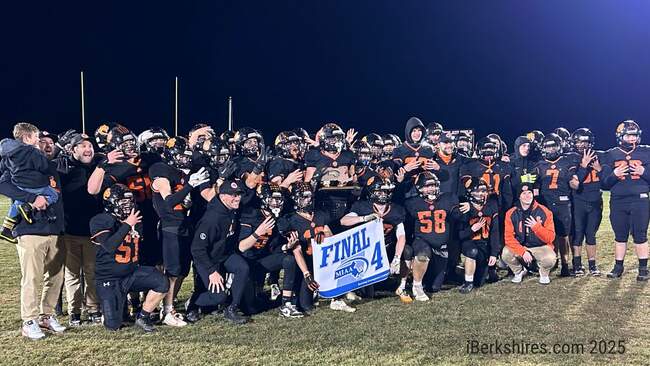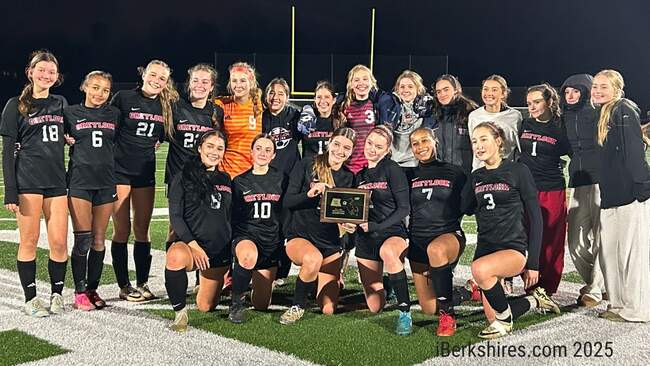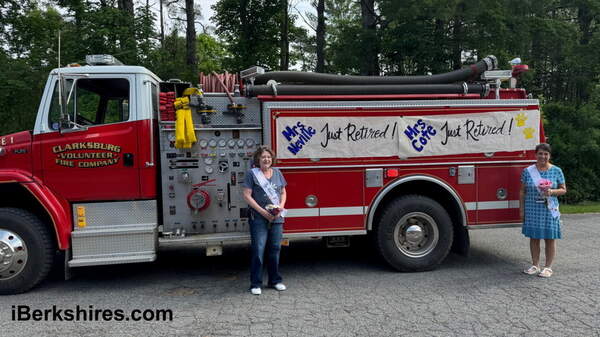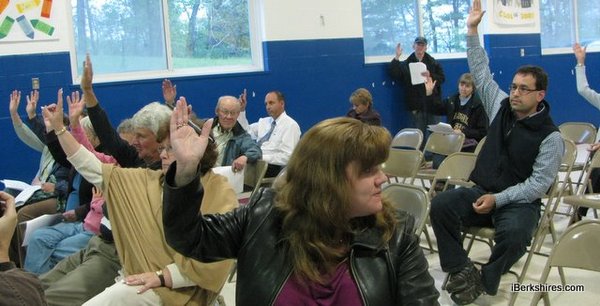
Clarksburg OKs $3.5M Budget for 2011
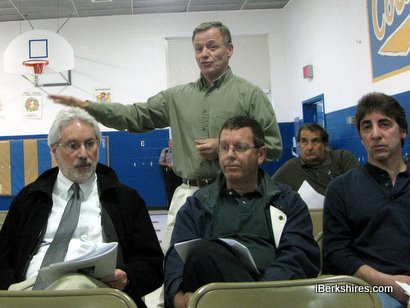 Robert Norcross expresses his disappointment that teachers had not had to sacrifice like other town employees. Seated in front of him are Superintendent Jonathan Lev, left, and School Committee members David Berger and Jeff Levanos. |
The town meeting also passed a town budget of $967,570 and an assessment of $169,541 to the Northern Berkshire Vocational School District. The rest of the 17-article warrant passed with little or no discussion. Fewer than 20 voters attended this year's meeting at the elementary school.
The school district budget, however, evoked some angry comments over salary raises in the current three-year contract. At last town meeting, some of the same people had objected to the teachers taking salary increases while other town employees had their wages frozen and took two weeks of unpaid furlough.
"I'm not here to bash the teachers ... but once again the teachers escaped any sacrifice," said Robert Norcross, after learning the School Committee had negotiated a new three-year contract that guaranteed annual 2 percent wage increases. The last contract was for 3 percent hikes. Norcross said the committee wasn't acting in the best interests of the town. "They're not advocates for the school, they're elected advocates for the town ... we should all suffer together."
Northern Berkshire School Union Superintendent Jonathan Lev said the school budget was $68,000 lower than last year. "The kids are high quality ... they're usually the valedictorians. We should be proud of the kids coming out of the school and it's the teachers that are doing it."
Clarksburg resident and past president of the North Adams Teachers Association Christopher Caproni said the quality of the school is a major factor in attracting families and keeping real estate values high.
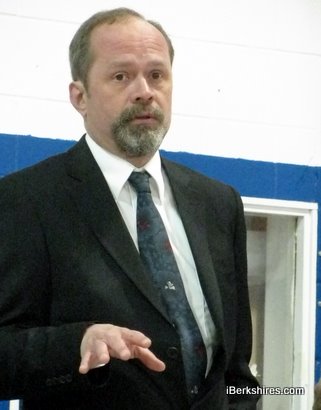 Selectman Carl McKinney said the town's side of the budget was smaller than it was eight years ago. |
Lev said the school district spending is down some $62,000 over this year. "We have made cuts; we can't go any lower.
"We need the input from the people of Clarksburg ... that is why the School Committee exists," he continued, saying the committee would welcome input during budget meetings. The School Committee meets the first Thursday of the month at 5:15 at the school; its meeting schedule is posted in Town Hall.
After about 20 minutes of back and forth, and no suggestions of cuts, the budget was passed without opposition. "I just wanted to bring it up for discussion," said Norcross.
Voters also authorized borrowing up to $500,000 for a STRAP grant in anticipation of full reimbursement from the state to resurface West Cross, Middle and Daniels roads and spending $20,000 toward feasibility studies for grant applications.
They also approved a transfer of $10,000 from the sewer enterprise fund into the general fund as the first in an expected series of repayments totaling $30,000.
Selectmen touched briefly on the outcome of the town election on Tuesday that saw voters give final approval to appointing a tax collector (140-137) and a treasurer (138-137). Changing those two elected positions, as well as the town clerk position, were approved by petition at last year's town meeting. However, voters rejected the idea of making the town clerk appointed by 143-133 and overwhelmingly returned Carol A. Jammalo to the position against challenger Melissa McGovern-Wandrei, the tax collector, by 217-65.
The tax collector's term ends next year and the treasurer's the year after. Town Administrator Michael Canales had put together a scenario should all three positions become appointed. Selectman Carl McKinney anticipated one full-time position would created out of the two part-time elected ones.
Also re-elected Tuesday were Selectwoman Debora LeFave, Moderator Bryan H. Tanner, School Committee member David Woods, McCann School Committee member Richard Bernardi, Tree Warden Ernest Dix, Library Trustee Rose Marie Peter and War Memorial Trustee Allen Goodrich. Winning with write-in votes to vacant seats were Gregory Vigna with nine votes for a three-year seat on the Board of Health and David Delano with four votes for a five-year seat on the Planning Board.


